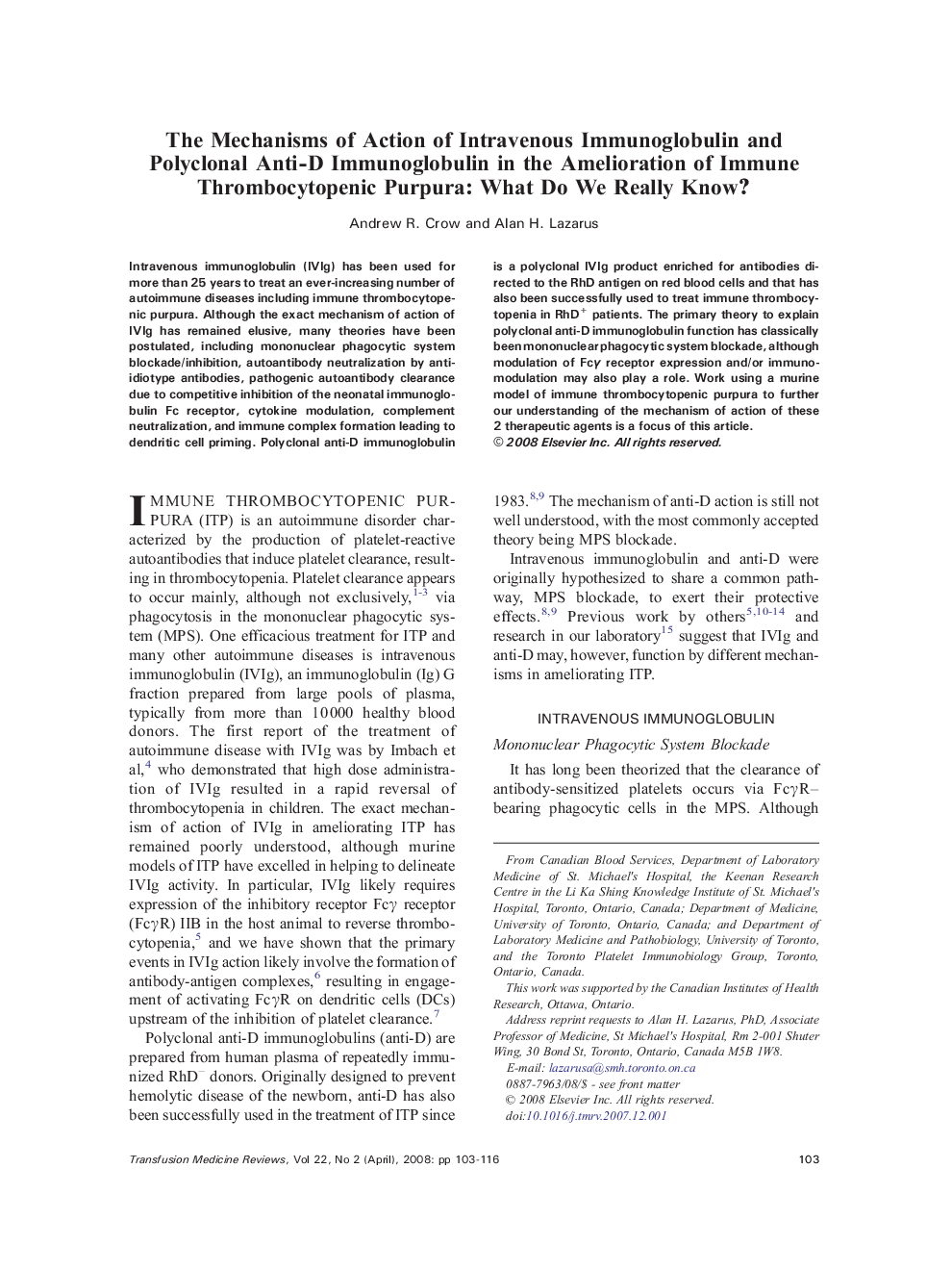| Article ID | Journal | Published Year | Pages | File Type |
|---|---|---|---|---|
| 3336884 | Transfusion Medicine Reviews | 2008 | 14 Pages |
Intravenous immunoglobulin (IVIg) has been used for more than 25 years to treat an ever-increasing number of autoimmune diseases including immune thrombocytopenic purpura. Although the exact mechanism of action of IVIg has remained elusive, many theories have been postulated, including mononuclear phagocytic system blockade/inhibition, autoantibody neutralization by anti-idiotype antibodies, pathogenic autoantibody clearance due to competitive inhibition of the neonatal immunoglobulin Fc receptor, cytokine modulation, complement neutralization, and immune complex formation leading to dendritic cell priming. Polyclonal anti-D immunoglobulin is a polyclonal IVIg product enriched for antibodies directed to the RhD antigen on red blood cells and that has also been successfully used to treat immune thrombocytopenia in RhD+ patients. The primary theory to explain polyclonal anti-D immunoglobulin function has classically been mononuclear phagocytic system blockade, although modulation of Fcγ receptor expression and/or immunomodulation may also play a role. Work using a murine model of immune thrombocytopenic purpura to further our understanding of the mechanism of action of these 2 therapeutic agents is a focus of this article.
